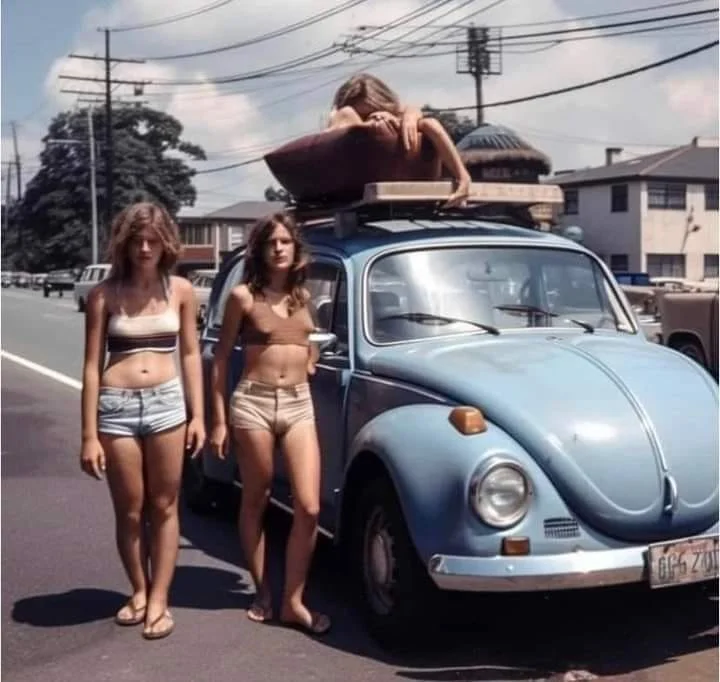AIn’t Real
Take a look at the image above.
What do you see?
At first blink, from the clothes and hair it seems to be a photo from the mid-1970s to early 1980s.
Blink again.
I’m not a professional photographer but I do know something about the science and history of picture taking, and this doesn’t share either the tone or the texture of genuine photos from that era.
I’m not referring here to color faded snapshots but professional photos of the era. I know something about the various film stocks used at that time; each one has its own unique color warmth and grain texture.
Old negatives create images on microscopic particles of silver suspended in the film’s emulsion. Depending on how many and how fine the particles were and how sensitive they were to light, the resulting image would display varying degrees of grain from the very rough to the very smooth. None of those film stocks look anything like this.
So that alerted my radar and I looked closer at the image.
Check the shadows at the feet of the two figures. They’re almost jet black on a bright and sunny day. Ambient spill light would lighten it enough to discern asphalt texture beneath it.
Further, not only do the shadows not match up with the figures supposedly casting them, they don’t match up with the shadow from the car itself.
Take a look at that car, particularly the license plate. There’s a couple of readable letters and numbers on it, but there are also symbols that resemble letters and numbers but aren’t actual letters or numbers.
Finally, wot da hell is going on atop the car? Some kind of Lovecraftian horror?
AI generated image.
Not real.
Now what’s the big deal about this, you ask?
Most people at first glance see the image, interpret it as a photo from the mid-1970s to early 1980s, ///accept it as genuine///, and scroll on.
I’m different because of my background and experience; I saw clues that tipped me this wasn’t real.
So what’s the harm? If it had been a photorealistic work of hand drawn art, would it be problematic?
Not if identified as such.
But this image was prompted to look as much like a genuine photo as possible.
As noted most people see it, register it in their mind, then scroll on.
This image -- in and of itself -- is harmless.
But imagine images that look real at a brief glance that shape you opinion and views on something.
Nothing extreme, no shots of celebrities doing outrageous acts, but let’s say a politician seen in close proximity of a person accused of bribing politicians.
The meeting never occurred, but you seen the image and without recognizing it was AI generated, you accepted it -- and the implied relationship -- as real.
See where that leads us?
This is not a new phenomenon. Political campaigns have doctored photos for generations, hoping to trick viewers into believing something that didn’t happen…
…did.
Sometimes it’s accomplished by skillful editing, cropping out elements that entirely change the meaning of the photo.
Sometimes it’s accomplished by surreptitiously adding an element, adding a person to a photo who wasn’t there.
Sometimes it’s accomplished by overlaying the face of one figure over the body of another, creating the impression they did something they didn’t do.
Most people don’t pay close attention to what they consume.
The nice thing about poison is that you’ll see the results PDQ.
Fake photos can take a lifetime to kill you.
© Buzz Dixon


![And Stop Calling Me Horatio [FICTOID]](https://images.squarespace-cdn.com/content/v1/590697e7d1758ec4d7669624/1714620842579-95XCBMHJVYO7205RT1AA/FT+217+And+Stop+Calling+Me+Horatio+-+Marcello+Bacciarelli+SQR.jpg)
![“Vola, Bombelas!” [FICTOID]](https://images.squarespace-cdn.com/content/v1/590697e7d1758ec4d7669624/1714620564181-EFNF77WRFTR177QZVB29/FT+216+Vola+Bombelas+SQR.jpg)